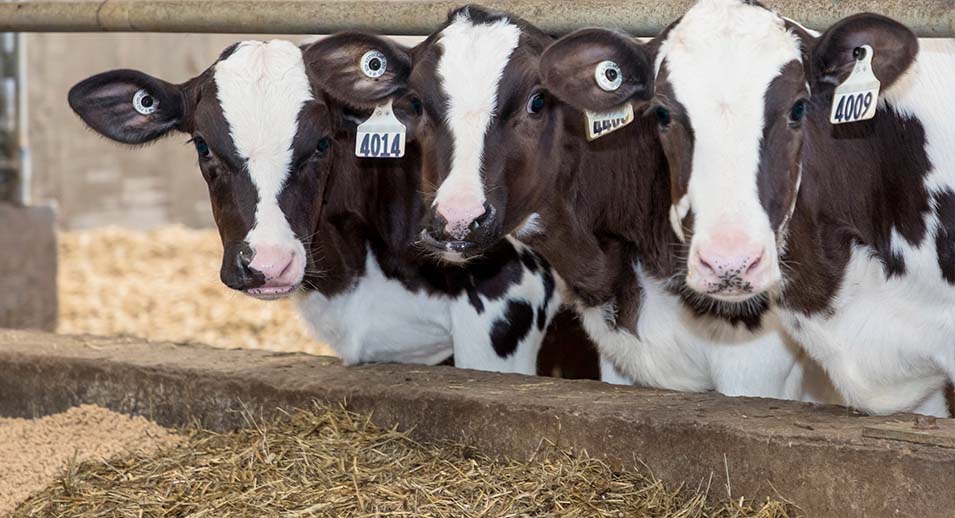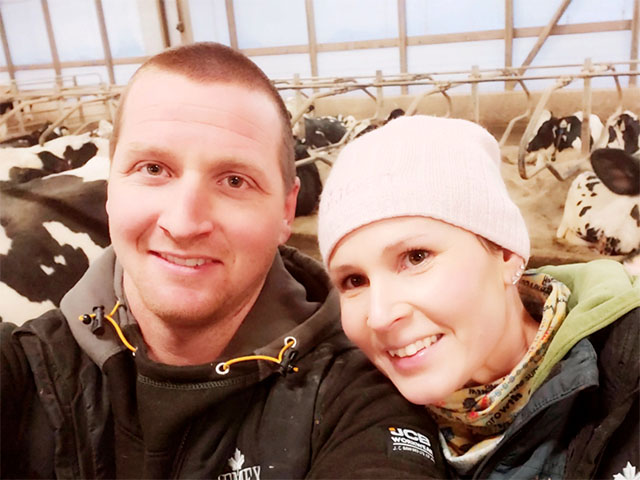Research Bits – Calf and Heifer Management
- September 22, 2022
Our experts participate in conferences around the world to keep up with new knowledge and tools developed in dairy production. Here are four innovative research projects focusing on calf rearing from the 2022 American Dairy Science Association annual meeting.

How can you turn poor quality colostrum into good quality colostrum?
Reducing severity of a calf’s diarrhea with colostrum: Is it possible?
Over the years, research has demonstrated the essential role of colostrum to support calf heath and development in early life. On top of these benefits, colostrum supplementation during episodes of scours has shown to reduce the severity, days to resolution and to improve growth, according to researchers from University of Guelph (Carter et al.).
These researchers enrolled calves affected with visible diarrhea and fed them 2.5L (130 g/L) twice daily either with milk replacer (4d) or with a 50:50 milk-colostrum mix (130g/L), for 2 or for 4 days. Calves fed the milk-colostrum mix over the 4 days stopped scouring 1.4 days earlier and grew 98 g/day faster than those receiving milk replacer only. Depending on the accessibility of colostrum replacer and the conditions available to ensure proper mixing and delivery to the affected calves, this therapy could be worth considering on your farm.2
Transition milk to decrease antimicrobial use
A study led by the University of Guelph (Uyama et al.) was performed to estimate antimicrobial use and investigate the relationship with calf management practices in 7,817 pre-weaned heifer calves on 74 dairy farms from 5 Canadian provinces. The researchers visited the participating farms to administer a questionnaire and collect calf health records, and subsequently assessed the relationship of calf management practices with the number of antimicrobial treatments/calf-year. They reported that most of antimicrobial treatments were used to treat respiratory diseases (54%) and that farms in QC had a greater rate of antibiotic use than other provinces. Interestingly, this analysis pointed out that farms that fed transition milk (2-6th milking) had less than half the number of antimicrobial treatments (3.9 vs 9.3 treatments/calf-year) than those that did not feed transition milk.3
How do a calf's health parameters vary depending on its age and the rate at which it's weaned?
Weaning is a challenging process for dairy calves, particularly when considerable amounts of milk are fed. A study led by researchers from the University of Alberta (Wolfe et al.) examined the effects of calf weaning age (6 vs. 8 wk) and pace (abrupt vs. gradual) on health parameters in dairy calves fed milk replacer (up to 1,200 g/day) in addition to free-choice water, calf starter, and chopped alfalfa hay. They concluded that weaning at 8 weeks improved the maturation of the immune system and health measurements versus weaning at 6 weeks, while gradual weaning allows a better grain intake, rumen development and growth.4
Sources
12254T – Effects of enriching maternal colostrum with bovine dried colostrum replacer on IgG absorption in newborn male calves. A. J. Lopez*1, H. McCarthy1, T. T. Yohe1, J. Echeverry-Munera1, M. Nagorske2, D. L. Renaud3, M. A. Steele1. 1Department of Animal Biosciences, Animal Science and Nutrition, University of Guelph Guelph, ON, Canada, 2The Saskatoon Colostrum Company Ltd Saskatoon, Saskatoon, Canada, 3Department of Population Medicine, University of Guelph Guelph, ON, Canada.
22039M – Evaluating the efficacy of colostrum as a therapy for diarrhea in young calves. H. S. Carter*1, M. A. Steele1, J. H. C. Costa2, M. Nagorske3, D. L. Renaud1. 1University of Guelph Guelph, ON, Canada, 2University of Kentucky Lexington, KY, 3Saskatoon Colostrum Company Ltd Saskatoon, SK, Canada.
32037M – A cross-sectional study on antimicrobial use and calf management practices in Canadian preweaned dairy calves. T. Uyama*1, D. Renaud1, D. Léger2, D. Rizzo2, E. Morrison1, E. de Jong3, K. McCubbin3, H. Barkema3, S. Dufour4, J. Sanchez5, L. Heider5, J. McClure5, S. LeBlanc1, C. Winder1, D. Kelton1. 1Department of Population Medicine, ON Veterinary College, University of Guelph Guelph, ON, Canada, 2Centre for Food-borne, Environmental and Zoonotic Infectious Diseases, Public Health Agency of Canada Guelph, ON, Canada, 3Department of Production Animal Health, Faculty of Veterinary Medicine, University of Calgary Calgary, Alberta, Canada, 4Faculté de médecine vétérinaire, Université de Montréal St-Hyacinthe, Québec, Canada, 5Department of Health Management, Atlantic Veterinary College, University of Prince Edward Island Charlottetown, Prince Edward Island, Canada.
41165 – Effects of weaning strategies on health, hematology, and productivity in Holstein dairy calves. A Wolfe*1, P Rezamand2, B Agustinho2, D Konetchy2, A Laarman1,2. 1University of Alberta Edmonton, Alberta, CA, 2University of Idaho Moscow, ID.










